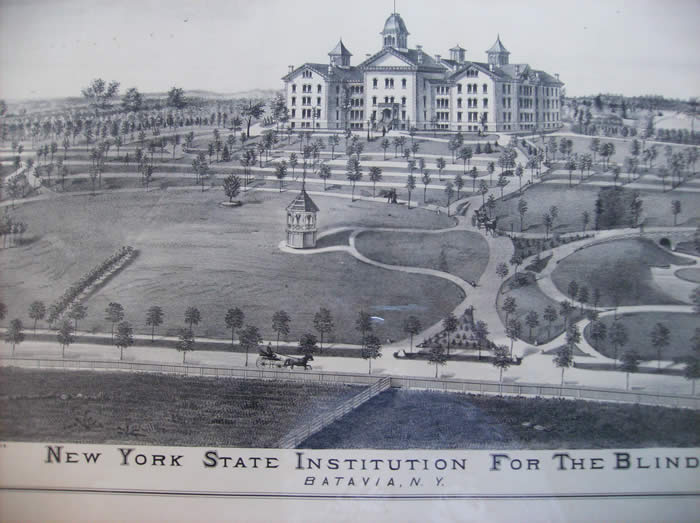History : School for the Blind : Special Education : P-12 : NYSED
History of the New York State School for the Blind
History of the New York Institution for the Blind
During the years immediately following the Civil War, an awareness of the
needs of persons with disabilities came into focus. This led to the establishment
of programs to serve individuals with disabilities in many parts of the country.
On April 27, 1865 an Act was passed by the Legislature which authorized the
establishment of “The New York State Institution for the Blind.” The purpose
of the school was to educate the young blind of the State in the usual branches
of learning pursued in schools for the seeing, and train them in some appropriate
industrial arts which might aid them in gaining a livelihood either under the
fostering care of the Institution or through their own individual efforts.
In February 1866, the Building Commissioners chose a site overlooking a beautiful
region embowered in trees, broad meadowlands, cultivated fields and forest-clad
slopes. The region had also long been celebrated for its general good health,
and freedom from epidemic and endemic diseases. It was referred to as the
most healthy place on the “Holland Purchase.”
The area had an abundance of
water and a much needed railroad station for transporting students to and from
their homes.
The result was the selection of the Village of Batavia, in the County of Genesee,
upon grounds consisting of 50 acres purchased and presented to the State by
the citizens of Batavia.
On September 2, 1868, the building was opened for use. Dr. Asa D. Lord welcomed
the first 17 students to the school. Sixty-five students were in attendance
by the end of the school year.
The schools purpose was to provide a public
education for children who were blind utilizing a curriculum adapted to meet
their special needs. Instruction was given in reading, spelling and definitions,
writing, arithmetic, geography, English grammar, history, natural philosophy,
moral cultures, Sabbath instruction and vocal and instrumental music. Knitting,
crocheting, beadwork and several varieties of fancy work were also taught.
Other school activities included: Broom making, rug weaving, wood working,
farming and raising poultry, raising plants (Green House), Boy Scouts, Girl
Scouts, Wrestling, Typing, Guitar, Mandolin, organ and piano lessons.
NYSSB has graduated many recognized
citizens. Students have gone
on to careers in teaching, piano tuning, performing, broadcasting and
many other professional areas. The NYSSB Alumni Association is very active
and meets for an annual weekend in Batavia each June. Several alumni
offer professional and social assistance with our outreach efforts, which
serve blind students from districts for special weekend and weeklong
programs.
Over the years the school has changed in many ways, but its mission
has remained constant. The school has consistently provided an appropriate
education to students to assist them in skills of independence and reaching
their personal and professional goals.
[Return to Top]
















![Toni Kroos là ai? [ sự thật về tiểu sử đầy đủ Toni Kroos ]](https://evbn.org/wp-content/uploads/New-Project-6635-1671934592.jpg)


